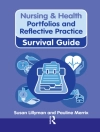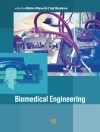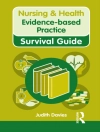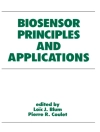Research Recipes for Midwives
A 16-step guide to writing a research proposal
Development of a research question, identification of a research method, and working through the steps to build a sample are complex and hugely important stages in the career of a student midwife. A good research ‘recipe’—a specific method geared to address a certain kind of question—can be critical to the creation of a successful proposal.
Research Recipes for Midwives offers a selection of thoroughly tested research methods from which student midwives can choose in developing their own projects, expertly directing the reader through a 16-step process for applying a ‘recipe’ to their own proposal. Reader will also find:
- Information regarding the relationship between midwifery research and practice
- A thorough introduction to research methods built around clear concepts
- Tools for making a complex and challenging process manageable and exciting
Research Recipes for Midwives is the ideal resource for student midwives developing research proposals, particularly those enrolled in research methods modules, providing readers with an edge in this foundational element of the research process.
สารบัญ
About the Author xv
Foreword xvi
A Memorandum from the Author xvii
Acknowledgements xxiv
1 Introduction to Research Methods 1
1.1 What is Research? 1
1.1.1 Definition 1
1.2 Glossary of Research Terms 2
1.3 Ontology 3
1.3.1 Subjectivism 3
1.3.2 Relativism 3
1.3.3 Objectivism 3
1.4 Epistemology 4
1.4.1 The Theory of Knowledge 4
1.5 Generic Stages of the Research Process 5
1.5.1 The Hollins Martin 16- Step Model to Writing a Research Proposal 6
1.6 Triangulation 18
1.6.1 A Scientific Summary of Mixed Methods Research Follows 18
1.7 Introduction to Research Methods Chapter Summary 34
1.7.1 Chapter Conclusion 34
1.8 Self- Assessment Questions (SAQs) 34
Answers to Chapter 1 SAQs 36
2 Inductive Versus Deductive Approaches 37
2.1 Introduction to Inductive Versus Deductive Approaches 37
2.2 More About the (Quantitative) Deductive Approach 38
2.3 More About the (Qualitative) Inductive Approach 39
2.4 The Qualitative Versus Quantitative Debate 40
2.5 The Difference(s) Between Qualitative and Quantitative Data 41
2.5.1 All Qualitative Data can be Coded Quantitatively 41
2.5.2 All Quantitative Data is Based on Qualitative Judgements 42
2.6 Qualitative and Quantitative Assumptions 43
2.6.1 Chapter Conclusion 43
2.7 Self- Assessment Questions (SAQ) 44
Answers to Chapter 2 SAQs 44
3 Literature Searching and How to Critique a Research Paper 45
3.1 Define the Term Literature Review 45
3.2 Outline the Purpose of Research 45
3.3 What is a Literature Review? 46
3.4 What is the Purpose of a Literature Review? 46
3.5 What Should a Literature Review Consist of? 46
3.5.1 Introduction 46
3.5.2 Body 47
3.5.3 Conclusion 48
3.6 Steps Involved in Writing a Literature Review 48
3.7 Outline the Four Stages of Developing a Literature Review 51
3.7.1 Setting the Topic in Context 52
3.7.2 Looking at Information Sources e.g. Search Tools 52
3.7.3 What Databases you are Going to Search 53
3.7.4 Identifying Relevant Studies using Predecided Search Terms 53
3.7.5 Using Information Sources 53
3.7.6 Results 54
3.7.7 Validation 55
3.7.8 Use of Appraisal Tools 55
3.7.9 The Author 56
3.7.10 Date of Publication 56
3.7.11 Edition or Revision 56
3.7.12 Publisher 56
3.7.13 Critiquing Models may be used to Analyse Primary Papers 57
■ Box 3.1 Example of a Critiquing Model 57
3.7.14 Positioning of the Literature Review 58
3.7.15 Writing the Literature Review 58
3.8 What is a Research Critique? 62
3.9 Stages Involved in Critical Reading of Research Articles 62
3.10 Research Critiquing Model 63
3.11 Systematic Reviews 65
3.11.1 Types of Systematic Review 66
3.12 The Hollins Martin Research Critiquing Tool 66
3.13 Meta- Analysis 69
3.13.1 Advantages of Meta- Analysis 69
3.13.2 Steps Involved in a Meta- Analysis 70
3.13.3 Chapter Conclusion 71
3.14 Self- Assessment Questions (SAQs) 71
Answers to Chapter 3 SAQs 72
4 Stating the Objectives Aim(s) Research Question(s) Sub-Question(s) Hypotheses and Null Hypotheses of the Proposed Research Study 73
4.1 What is an Objective? 74
4.2 What is an Aim? 75
4.3 What is a Research Question? 75
4.3.1 Refining a Broad Topic into a Specific Researchable Question 75
4.4 What is a Hypothesis? 78
4.5 What is a Null Hypothesis? 79
4.6 Relationship Between the Null Hypothesis and the Thesis Statement 81
4.7 The Methods Section of the Research Proposal Will Follow 82
4.7.1 Chapter Conclusion 85
4.8 Self- Assessment Questions (SAQs) 86
Answers to Chapter 4 SAQs 86
5 Choosing an Appropriate Research Method (Recipe) to Answer the Question 87
5.1 Selecting an Appropriate Research Method (Recipe) to Answer Your Research Question 87
5.2 Choosing a Quantitative Method 88
5.3 Choosing a Qualitative Method 88
5.4 Selecting Which Research Method (Recipe) to Use 89
5.4.1 Considering Using a Quantitative Method (Recipe) 90
5.4.2 Features Associated with the Quantitative Approach 90
5.5 Descriptive Research Method 92
5.5.1 Epidemiology 92
5.5.2 Correlations 93
5.6 Experimental Research Method 94
5.6.1 Randomized Controlled Trial (RCT) 95
5.6.2 Quasi- Experimental Research Method 95
■ Box 5.1 An Example of a Quasi- Experimental Method 96
5.7 Survey Research Method 96
5.7.1 Quantitative Survey Research Method 97
5.7.2 Qualitative Survey Research Method 99
5.8 Action Research Method 101
5.9 Clinical Audit Research Method 103
5.9.1 Cycle of Stages Involved in Clinical Audit Research Method 103
■ Box 5.2 A Notorious Clinical Audit Carried Out by Florence Nightingale 103
5.9.2 Standard- Based Audit Method 104
5.9.3 Critical Incident Audit Method 105
5.10 Grounded Theory Research Method 106
5.10.1 Writing a Methodology for Grounded Theory 108
5.10.2 Example Philosophy Underpinning Grounded Theory Research Method 108
5.11 Phenomenology Research Method 110
5.11.1 Writing a Methodology for Phenomenology 111
5.11.2 Example Philosophy Underpinning Phenomenology Research Method Husserl 111
5.11.3 Heidegger 111
5.11.4 Intentionality 112
5.11.5 Interpretative Phenomenological Analysis (IPA) 112
5.12 Ethnography Research Method 113
5.12.1 Features of Ethnographic Research Method 114
5.12.2 Example Philosophy Underpinning Ethnography Research Method 114
5.12.3 Questions to Help you Evaluate Your Recipe 115
5.13 Case Study Research Method 115
5.13.1 Case Selection 116
5.13.2 Postscript 117
5.14 Triangulation 117
5.15 A Summary of How Papers are Written 118
5.15.1 Chapter Conclusion 118
5.16 Self- Assessment Questions (SAQs) 120
Answers to Chapter 5 SAQs 121
6 Accessing Populations of Participants and Sampling Them 122
6.1 Identifying the Appropriate Participants to Answer your Research Question(s) 122
6.2 What is a Population? 123
6.3 What is a Sample? 123
6.4 Stages of the Sampling Process 124
6.4.1 (Stage 1) Define the Population of Interest 124
6.4.2 (Stage 2) Specify a Set of Participants (or Items) that are Obtainable to Investigate 125
6.4.3 (Stage 3) Specify a Sampling Method for Selecting Participants from the Population 126
6.4.4 (Stage 4) Determine the Sample Size 129
6.4.5 (Stage 5) Write the Sampling Plan 130
6.4.6 (Stage 6) Practical Sampling and Data Collection Guidance 132
6.5 Summary of the Sampling Process 132
6.5.1 Chapter Conclusion 132
6.6 Self- Assessment Questions (SAQs) 133
Answers to Chapter 6 SAQs 134
7 Data Collection Methods 135
7.1 Differences Between Primary and Secondary Data 135
7.2 Data Collection Methods and Tools 135
7.3 Guidelines for Data Collection Processes 136
7.4 Questionnaires 137
7.4.1 What are Reliability and Validity? 140
7.4.2 What is Reliability? 140
7.4.3 Test–Retest 141
7.4.4 Parallel Form 142
7.4.5 Split Half 143
7.4.6 What is Validity? 143
7.4.7 Face Validity 143
7.4.8 Content Validity 144
7.4.9 Criterion Validity 144
7.5 Measurement 145
7.6 Interviews 146
7.6.1 Unstructured Interview 146
7.6.2 Semi- Structured Interview 146
7.6.3 Structured Interview 146
7.6.4 Focus Group Interviews 147
7.6.5 Steps Involved in Running a Focus Group 147
7.7 Observations 149
7.7.1 Roles Taken During Observational Data Collection 149
7.8 Summary of Data Collection Chapter 150
7.9 Self- Assessment Questions (SAQs) 150
Answers to Chapter 7 SAQs 151
8 Analyzing Qualitative Data 152
8.1 Introduction to Qualitative Data Analysis 152
8.2 Basic Processes of Qualitative Data Analysis 153
8.3 Coding the Data 154
8.3.1 The Coding Process 154
8.3.2 Defining Codes 155
8.4 Specific Analytic Strategies 156
8.4.1 Interpretative Phenomenological Analysis (IPA) 157
8.4.2 Grounded Theory Constant Comparative Analysis 157
8.4.3 Ethnographic Analysis 158
8.4.4 Narrative and Discourse Analysis 158
8.5 Cognitive Processes Involved in Qualitative Data Analysis 158
8.6 Summary of Analyzing Qualitative Data Chapter 160
8.7 Self- Assessment Questions (SAQs) 161
Answers to Chapter 8 SAQs 162
9 Analyzing Quantitative Research 163
9.1 Introduction to Quantitative Data Analysis 163
9.2 What the Term Statistics Means? 163
9.3 What are Descriptive Statistics? 164
9.3.1 Measures of Central Tendency 165
9.3.2 Measures of Dispersion 166
9.4 Distribution of Data 166
■ Box 9.1 How to Calculate the Range IQR and the Standard Deviation for the Example of Data Presented in Activity 9.1 167
9.4.1 The Normal Distribution 167
9.4.2 Parametric Tests 167
9.4.3 Skewness and its Relationship to Central Tendency 169
9.4.4 Non- Parametric Tests 170
9.5 What are Inferential Statistics? 171
9.6 Types of Quantitative Data Produced 171
9.6.1 Nominal Data 172
9.6.2 Ordinal Data 172
9.6.3 Interval Data 172
9.6.4 Ratio Data 172
9.7 Calculating Probability 172
9.7.1 The Relationship of Probability to Samples and Populations 173
9.7.2 Relationship between Population and Sample Statistics 174
■ Box 9.2 Example of a Relationship Between a Sample Mean and the Whole Population 174
9.8 Research Variables 175
9.8.1 Using the Standard Error 175
9.8.2 Confidence Intervals 176
9.9 Hypothesis Testing 176
9.9.1 Types of Statistical Tests that Test the Hypothesis 177
9.10 How to Select the Appropriate Statistical Test 178
9.10.1 Significant Difference Between Groups 179
9.11 Correlations 181
■ Box 9.3 Example Study that has used a One Sample t-test 180
■ Box 9.4 Example Study that has used a Paired Samples t- test 181
■ Box 9.5 Example Study that has used an Independent Samples t- test 183
9.11.1 Analysis of Variance (ANOVA) 184
■ Box 9.6 Example Studies that use Analysis of Variance (ANOVA) 184
9.11.2 Chi- Square Test 185
■ Box 9.7 Example Study that will use a Chi- Square Test 186
9.11.3 Fisher’s Exact Test 187
9.11.4 Spearman’s Correlation 187
9.11.5 Pearson’s Correlation 187
9.12 Summary of Analyzing Quantitative Data 187
■ Box 9.8 Example of Intended Data Analysis (STEP 10) 188
9.13 Self- Assessment Questions (SAQs) 188
Answers to Chapter 9 SAQs 190
10 The Role and Procedures Involved in Gaining Ethical Approval 191
10.1 Ethical Issues that Relate to Implementation of Research 191
10.1.1 Examples of Why Ethics Committees have Evolved 191
10.1.2 What does Research Ethics Mean? 192
10.1.3 Moral or Ethical Consideration 192
10.2 Ethical Terms 193
10.3 Preventing Harm 193
10.3.1 Risk 194
10.3.2 Deception 194
10.3.3 The Milgram (1963) Experiment 194
10.3.4 Privacy 194
10.3.5 Confidentiality 195
10.4 What is Ethical Approval? 196
10.5 Why is Ethical Approval Necessary? 196
10.5.1 The Declaration of Helsinki 196
10.6 Monitoring of Research Projects 197
10.6.1 Codes and Policies for Research Ethics 197
10.7 Obtaining Ethics Committee Approval 197
10.7.1 What does the Integrated Research Application System (IRAS) do? 198
10.7.2 What does the IRAS Committee do? 198
10.8 General Questions Asked for on an Ethics Application? 204
10.8.1 Chapter Conclusion 205
10.9 Self- Assessment Questions (SAQs) 205
Answers to Chapter 10 SAQs 206
11 An Empty Template for Designing a 16- STEP Research Proposal 207
11.1 Recap on How to Design a Research Proposal 207
11.2 An Empty 16- STEP Research Template 207
11.2.1 STEP (1): Give the Research Proposal a Title 207
11.2.2 STEP (2): Provide Relevant Personal and Professional Details 208
11.2.3 STEP (3): Provide a Short Abstract or Summary (around 300–400 Words) 209
11.2.4 STEP (4): Supply Six Keywords to Describe the Research Proposal 209
11.2.5 STEP (5): Construct an Introduction that Contains a Relevant Literature Review and Rationale 210
11.2.6 STEP (6): State the Objectives Aim(s) Research Question(s) Sub- Question(s) Hypotheses and Null Hypotheses of the Proposed Research Study 211
11.2.7 STEP (7): Outline the Research Method 212
11.2.8 STEP (8): Select Setting Participants Sampling Method Inclusion and Exclusion Criteria and Method of Recruitment 213
11.2.9 STEP (9): Describe Data Collection Instruments 213
11.2.10 STEP (10): Detail Intended Data Processing and Analysis 213
11.2.11 STEP (11): Declare any Ethical Considerations and Outline Data Protection Procedures 214
11.2.12 STEP (12): Produce a Timetable and Consider Potential Problems that may Occur 214
11.2.13 STEP (13): Estimate Resources that may be Required 215
11.2.14 STEP (14): Detail a Public Engagement Plan 217
11.2.15 STEP (15): Append a Reference List 217
11.2.16 STEP (16): Append Relevant Additional Material 218
11.3 Book Conclusion 218
References 219
เกี่ยวกับผู้แต่ง
Caroline J. Hollins Martin, Ph D, is a Professor and Subject Lead in Midwifery at Edinburgh Napier University, UK. She has decades of experience as an active midwifery researcher, is a teacher of research methods, and a supervisor of student midwives.












